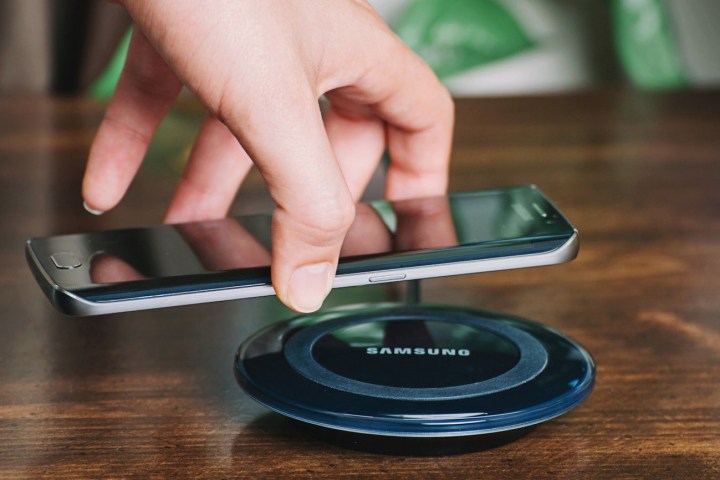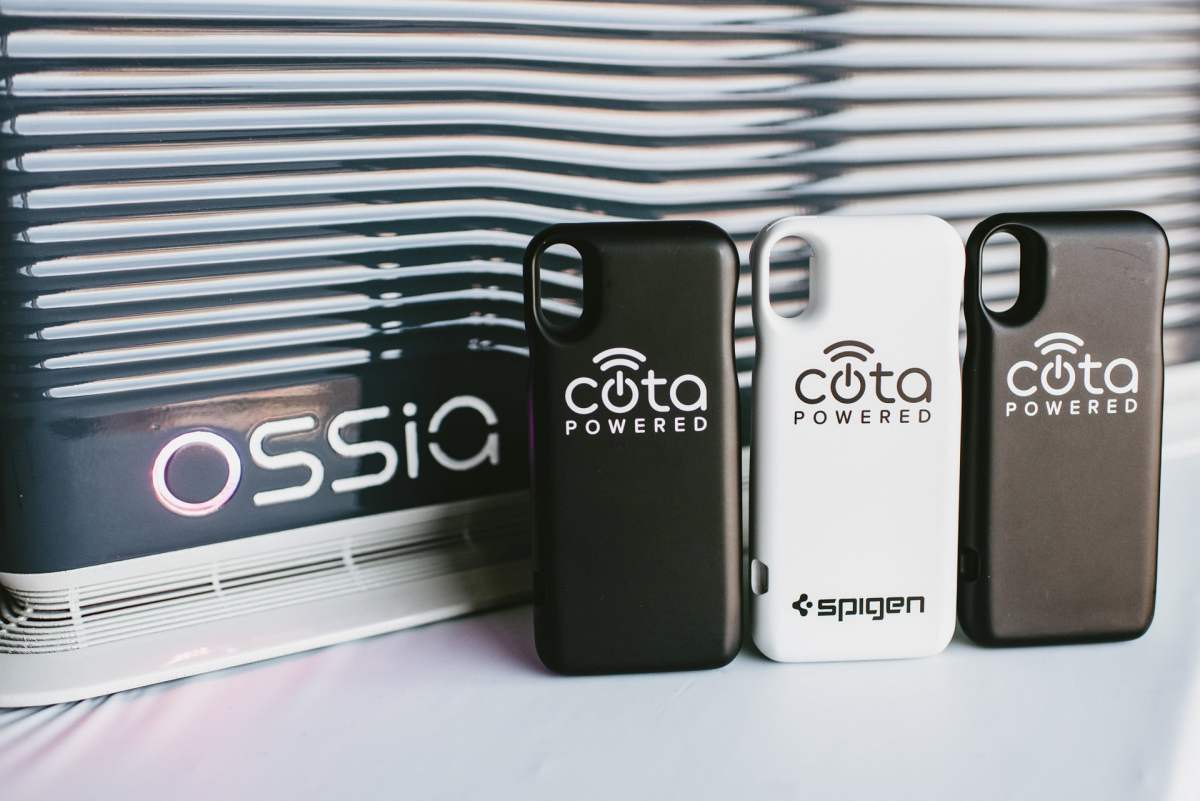
Wireless power is ubiquitous now. We use it to charge devices like electric toothbrushes, smartwatches, and earbuds, but most of us use it to charge our smartphones. What we’re talking about here is near field induction charging, and there are a few reasons it has finally taken off for phones in the last few years.
One of them is the Wireless Power Consortium’s victory over Powermat: the Qi wireless charging platform won, after a lengthy standards battle. The technology has also improved enormously – the first wireless charging mats delivered just 2.5 watts, whereas the latest spec allows for up to 15 watts. Then there’s the fact that Apple finally adopted Qi wireless charging in the iPhone range, joining Android manufacturers that have supported it for years such as Samsung, Google, and LG.
“Some companies are more adventurous and go faster,” Menno Treffers, founder and chairman of the Wireless Power Consortium, told Digital Trends. “Some companies are a little more conservative and a little slower.”
Near field wireless charging is thriving, but it still depends on fairly close contact.
Many of us have wireless charging pads on the desk at work or on the nightstand at home. It’s convenient and easy when you have time to charge, though you may still prefer to plug in when you need a burst of battery power in a hurry.
“It’s not an either / or,” Treffers said. “You need both.”
Qi wireless charging is also making inroads into infrastructure, with pads popping up in restaurants and trains. One of the big advantages is that wireless charging pads don’t require the same level of maintenance as USB ports do. Ports break with wear and tear, both in your devices and wherever you’re plugging in. Wireless charging can cut down on that, and there’s no evidence that it degrades your battery faster than wired charging.
The Wireless Power Consortium has its sights set on the kitchen next, with big wireless charging pads that sit beneath your worktop and can deliver 2KW to wirelessly power blenders or hotplates. This can help people when space is at a premium — and it may be the answer to the minimalist kitchens of our dreams.

The organization will also continue to push the upper limits of smartphone charging.
“For phone charging, it’s just a matter of increasing the power we can deliver while maintaining safety,” Treffers said.
But while near field wireless charging is thriving, it still depends on fairly close contact. What about sending power further?
Wireless power over distance is still coming
Wireless power over distance is a nascent category but it constantly feels as though it’s on the verge of a breakthrough. Last year, we posed the question: When will your phone charge wirelessly in your pocket? The answer was “soon” … and we’re still waiting.
Having seen working demonstrations from Ossia — transmitting power to a phone case over a distance of a few feet to slowly charge the phone inside — we know that the tech works. Ossia recently partnered with case maker Spigen to bring this technology to market. At CES, Spigen CEO Daeyoung Kim said the company is hoping to release some kind of transmitter and power receiving case package by 2020.
“Power through the air has existed for a while.”
The problem is there are limits on the power that can be delivered, and that’s tied up with the difficulty of getting certification.
“Power through the air has existed for a while,” Treffers said. “It’s not technically difficult, but making it efficient is hard.”
The Ossia demo we saw involved a large transmitter sending out 10W and a receiving device that could pick up around 1W within six feet of the transmitter. Beyond that distance the charge dropped down to milliwatts and eventually microwatts.

When the power demands of the receiving device are very low (retail price tags, for example), you can safely and easily transmit power to them. A company called Powercast has developed several products, including e-ink retail tags that don’t have any battery inside and can be updated wirelessly. It has FCC approval because the power levels are very low, and it has managed to achieve a maximum range of 80 feet.
But what if the receiving device requires more than just a few microwatts of power? Charging a phone with 5W is considered slow nowadays, but to get anywhere close to that with wireless charging through the air, you’d have to transmit an enormous, possibly unsafe, amount of power.
“The efficiency is horrible, and you immediately get into issues with regulators on consumer safety,” Treffers said.
The FCC limits currently in place were not designed with wireless power in mind, but rather to keep wireless communication safe.
One of the biggest companies promising wireless power over distance is Energous. There was some buzz about FCC certification towards the end of 2018, but that was just for its near field solution, which is a lot like the Qi wireless charging we’re already using. More notable was the approval it won in 2017 for sending power over distance.
It may be useful for keeping fitness bands, headphones, or TV remotes charged up, but it’s not enough for phones.
While Powercast is certified under Part 15, which is designed for telecommunications devices and limits power transmission to 1 watt, Energous was certified under Part 18, which has no limitations on power or distance, provided it can be delivered safely. While there’s a theoretical difference there, for all intents and purposes there doesn’t seem to be a practical difference — yet.
At the moment, the amount of power they are delivering is measured in milliwatts. It may be useful for keeping fitness bands, headphones, or TV remotes charged up, but it’s not enough for phones.
Energous has partnered with Dialog Semiconductors to develop a wireless charging receiver chip, but beyond the near field charging, all we’ve seen so far is mock ups and concepts. Various wearable manufacturers seem interested and at least one big phone manufacturer is reportedly licensing the technology.
There have been persistent rumors that Energous is working with Apple, which the company has done nothing to dispel. But whether it’s Apple or another phone manufacturer, there’s no telling what they have in mind for the tech right now – it might not even be phone charging.
It’s worth noting that near-field Energous charging does have an advantage over Qi: It doesn’t require coil alignment, so antennas can be put in flexible material — think watch straps. You don’t necessarily need the same flat surface contact. While the trickle charge at distance wouldn’t be a big enough draw to persuade people to bite, if it works in addition to the near field, with the same chip, then it may be an easier sell.
Major barriers to overcome
There are many other players out there in the wireless charging landscape from Wi-Charge to WiTricity, not to mention uBeam, which employs ultrasound to transmit energy. But the longer it takes for someone to get a consumer product out there, the more our natural skepticism grows.
For wireless charging to deliver meaningful amounts of power over distance, it needs to solve the efficiency problem. We’ve already seen some beamforming, meaning the transmitter shakes hands with the receiver and fires power directly to it, rather than blasting out watts in all directions.
For wireless charging to deliver meaningful amounts of power over distance, it needs to solve the efficiency problem.
Still, even in ideal conditions, if you compare wireless power over distance to wired or Qi wireless charging, it’s very inefficient; you’re losing the vast majority of the energy you send out. While wired charging is somewhere around 85 percent efficient, Qi wireless charging started around 60 percent, but has now reached 75 percent and up.
Wireless charging over distance is more complicated because it drops off the further away you are, but we’re looking at somewhere around 10 percent efficiency at relatively close range. If you’re concerned about responsible use of power, that inefficiency is going to be a problem.
Safety is another big issue. The ability to direct power with beamforming techniques potentially makes it safer, because it can help the transmitter avoid firing power at people. But even if these companies can win FCC approval and certification in other countries follows, they still need to convince the general public that it’s safe.
When talking about this technology, one of the first questions we always get asked is about how safe it is, and that’s because it’s not intuitively safe. The convenience is a big attraction, but it will take time to convince people that there’s no risk.
We’re still excited about technology that can wirelessly charge the phone in our bag or pocket without any effort on our part, but there’s still no telling when we’ll actually see it in a product you can buy.
Editors' Recommendations
- Android 15 might add a new way to charge your gadgets
- The Pixel 6’s wireless charging speeds reportedly go up to 23 watts
- Future Motorola phones could wirelessly charge from up to 30 feet away
- The OnePlus 8 will have wireless charging, and it’s going to be quick
- OnePlus might cave to pressure and add wireless charging to the OnePlus 8 Pro


